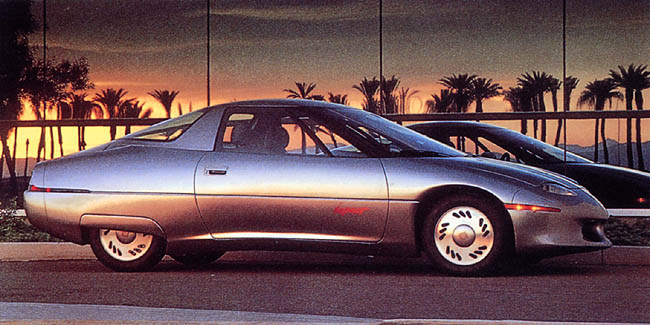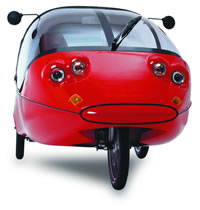Arnold Schwarzenegger is an avid proponent of green technology. California has made massive strides to make itself the green tech capital of the world. He loves his Tesla Roadster so much that he gave Tesla huge incentives to manufacture their future sedan, the Model S, in San Jose.
Now, about this bailout. With all the resources available to the Big 3, they still could not produce a viable electric car after GM destroyed the EV1. The Chevy Volt has about a quarter of the range the EV1 was capable of in the mid 90’s. And now they expect us to bail them out so that they can continue to produce gas guzzling vehicles that nobody wants? They expect us to bail them out after we had to get a second job just to pay for gas because no domestic cars could get decent gas mileage? They expect us to bail them out after they continue to outsource jobs?
As of this hour, tonight, the fate of Detroit is in the hands of President Bush. The GOP does not want to bail them out, so I am curious to see what Bush will do. Mitt Romney suggests a managed bankruptcy. In a managed bankruptcy, “the federal government would propel newly competitive and viable automakers, rather than seal their fate with a bailout check.” I think this is the best course of action. This way, these new companies could reorganize and build cars for the 21st century. Maybe we could see an electric car company spinoff, based on the Chevy Volt and Chrysler ENVI programs.
Yes, if the Big 3 do go under, hundreds of thousands of US jobs will be lost, and several companies that manufacture for the Big 3 will go under. But $25 billion is probably just going to slightly delay the inevitable collapse of these helpless companies if they do not make a significant change of direction. If we bail out the Big 3, and they continue to be obstinate, and refuse to appease consumer demands, and continue to fail and embarrass America, I would rather they just “drop dead”.




